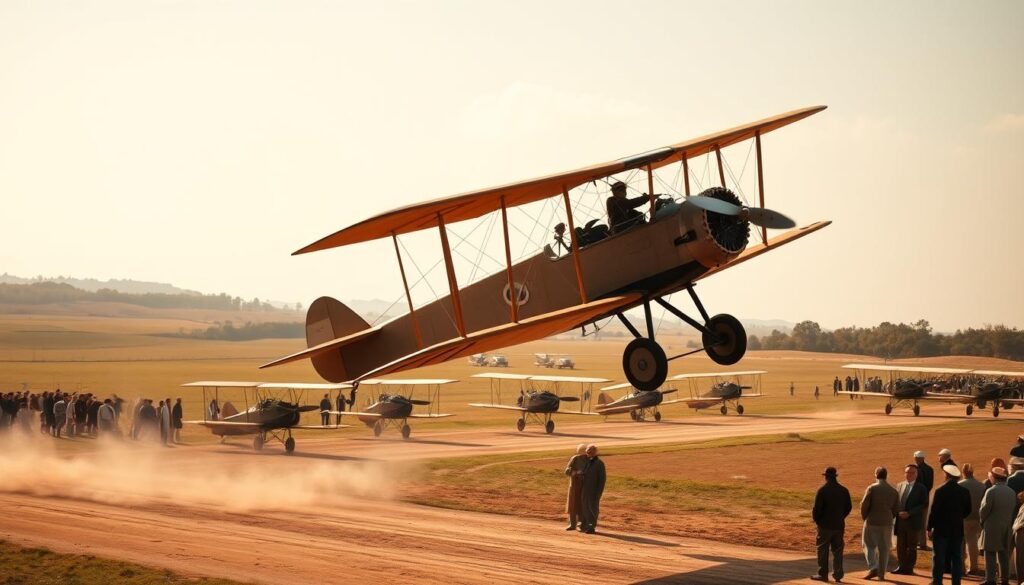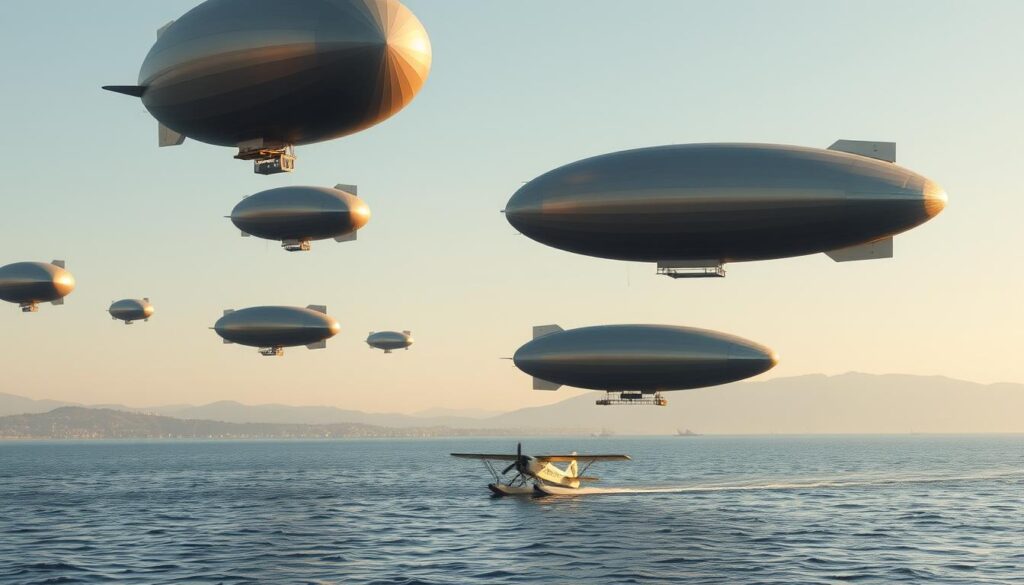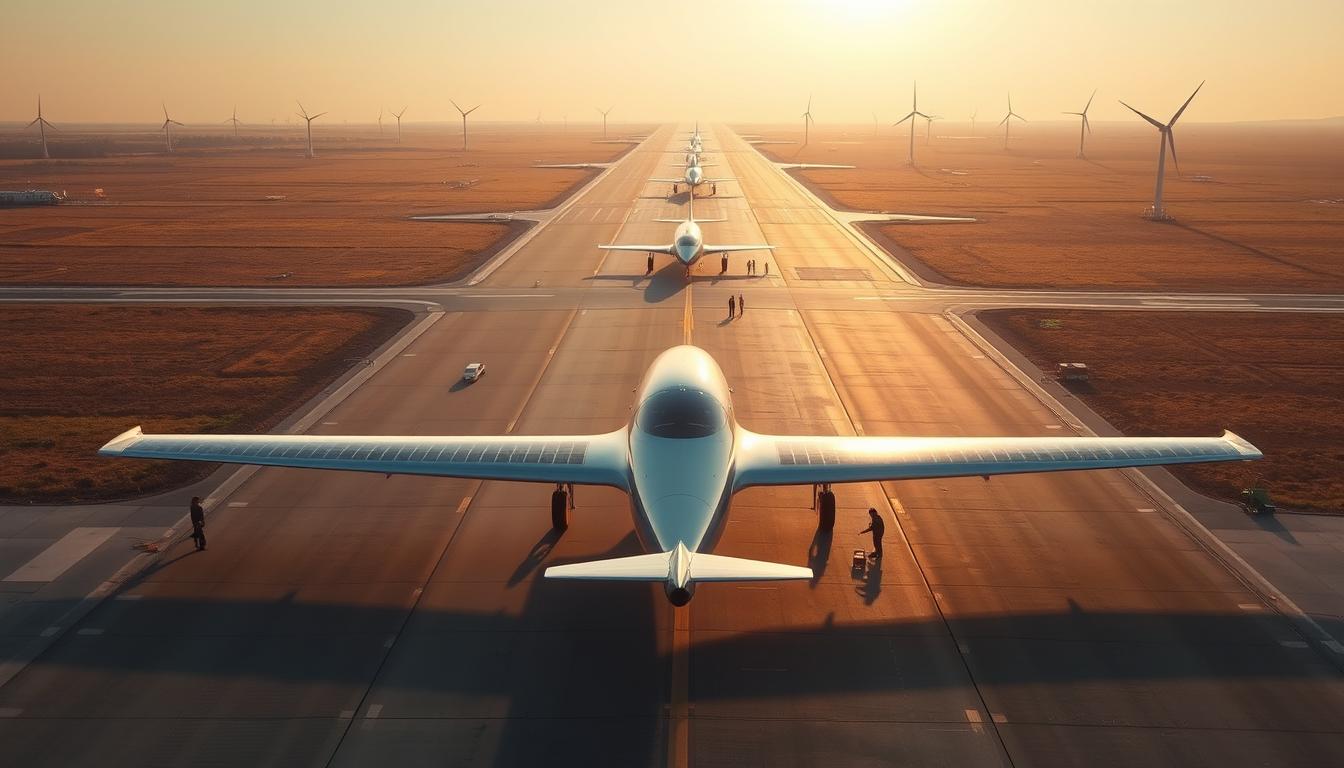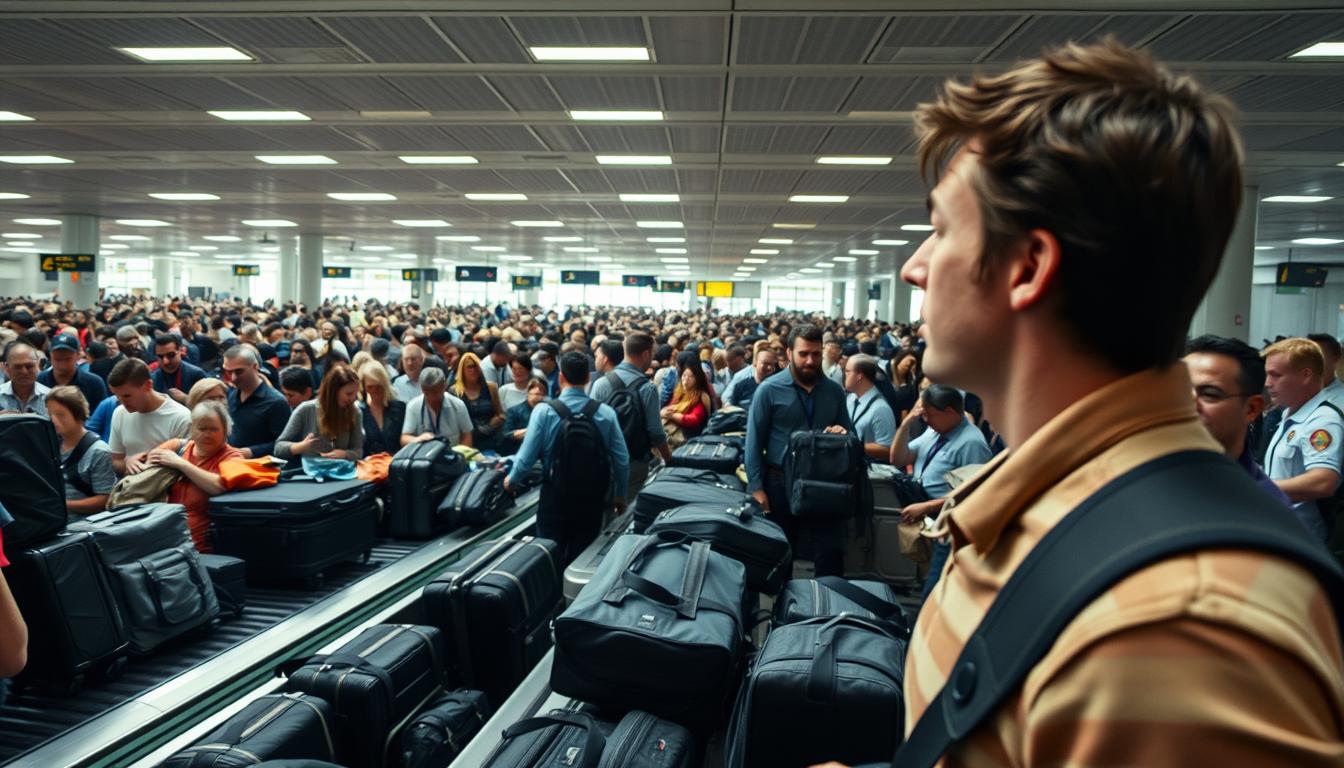Anúncios
Have you ever wondered how aviation has evolved over the years? From the first flights to the modern aircraft that cruise the skies today, the history of aviation is full of milestones and interesting facts.
The industry has undergone several transformations, shaping aviation as we know it today.
Anúncios
Today, we’ll learn a little more about the history of commercial aviation.
The beginnings of air transport
From balloons to the first powered flights, aviation has evolved significantly. Early experiments with balloons and airships were fundamental to understanding the principles of aerodynamics.
From balloons to the first motorized flights
Balloons were the first devices capable of transporting humans through the air. However, their lack of directional control limited their usefulness. The invention of dirigibles provided a partial solution, allowing for more controlled navigation.
Anúncios

The Wright Brothers’ Legacy to Aviation
The Wright brothers are credited with developing the first powered, controlled, and sustained airplane. Their legacy is fundamental to modern aviation, as they laid the foundation for the development of more advanced aircraft.
The first commercial flight in history
The first commercial flight in history took place in 1914, marking the beginning of commercial aviation, representing a major step for the industry, paving the way for air transport of passengers and cargo.
The birth of the first airlines
The emergence of airlines marked a watershed in the history of aviation. With the growing demand for air travel, companies began to establish themselves, offering services that would connect cities and countries.
DELAG: the world’s first airline
DELAG, founded in 1909, is considered the world’s first airline, created to operate Zeppelin airships, playing a crucial role in the early days of commercial aviation.
DELAG not only transported passengers but also promoted Zeppelin technology, revolutionizing air travel.
KLM and other pioneers still in operation
Another pioneer is KLM, founded in 1919, which still operates today. It is the oldest airline in the world still in operation, having established international commercial routes that became a landmark in aviation. Other airlines also began to emerge, expanding air travel options.
The first international trade routes
The first international trade routes were established in the early 20th century, connecting countries and continents. These routes were crucial to the growth of commercial aviation, facilitating trade and cultural exchange.
The expansion of airlines and international trade routes opened new opportunities for passenger and cargo transportation, boosting the global economy.
The era of airships and seaplanes
In the early 20th century, commercial aviation saw the emergence of airships and seaplanes, important milestones in aviation history. These aerial vehicles represented a period of innovation and challenge, contributing to the development of air routes.
The importance of seaplanes for transoceanic routes
Seaplanes played an important role on transoceanic routes, allowing landings in places without traditional airport infrastructure, facilitating connections between continents and distant islands, and expanding commercial aviation.
The Hindenburg and its impact on commercial aviation
The Hindenburg disaster had a profound impact on commercial aviation, leading to a reassessment of airship safety. While it marked the end of zeppelins for passenger transport, it spurred advances in other areas of aviation.
| Aerial Vehicle | Features | Impact |
|---|---|---|
| Zeppelins | Luxury, load capacity | They revolutionized transatlantic travel |
| Seaplanes | Flexibility, water landing capability | Expanded air routes to remote areas |
The jet revolution in commercial aviation
Jet aircraft marked a new era in commercial aviation, characterized by speed and efficiency, made possible by the development of aircraft capable of transporting passengers at previously unimaginable speeds.
The pioneering spirit of the De Havilland Comet
The de Havilland Comet was the world’s first commercial jet, entering service in 1952. Although it faced technical challenges, the Comet paved the way for the jet age in commercial aviation.
Boeing 707 and the popularization of jet travel
The Boeing 707 is widely credited with popularizing jet travel. With its ability to carry more passengers and fly longer distances, the 707 made air travel more affordable and comfortable.
How Jets Transformed International Travel
A introdução dos aviões a jato teve um impacto profundo nas viagens internacionais. As distâncias foram encurtadas, e o tempo de viagem foi reduzido de forma significativa, permitindo que as pessoas viajassem mais facilmente entre continentes, impulsionando o turismo e os negócios globais.
| Aircraft | Year of Introduction | Passenger Capacity |
|---|---|---|
| De Havilland Comet | 1952 | 36-44 |
| Boeing 707 | 1958 | 140-189 |
The golden age of commercial aviation

The golden age of commercial aviation was marked by unparalleled luxury. In the 1950s and 1960s, airlines competed to offer the best passenger experience.
The glamour of air travel in the 1950s and 1960s
At that time, traveling by plane was synonymous with glamour and sophistication, where passengers dressed elegantly to board, and the on-board service was worthy of a luxury restaurant.
Onboard service and premium experience
Onboard service was a hallmark of the golden age. Flight attendants were trained to provide personalized service and meet passengers’ needs.
The iconic uniforms of flight attendants
Flight attendant uniforms were designed to convey elegance and professionalism. Brands like Christian Dior and Pierre Balmain created iconic airline uniforms.
| Airline | Uniform Designer | Year |
|---|---|---|
| Pan Am | Christian Dior | 1950 |
| Air France | Pierre Balmain | 1960 |
| British Airways | Edward Heath | 1965 |
The combination of glamour, premium service and iconic uniforms contributed to the image of commercial aviation during its golden age.
Concorde and the supersonic era
The Concorde represented a revolutionary milestone in commercial aviation, ushering in the supersonic era. With its ability to fly at speeds exceeding the speed of sound, the Concorde was a watershed moment in aviation history.
Concorde’s revolutionary technology
The Concorde was the result of a collaboration between British Aerospace (now BAE Systems) and Aérospatiale (now Airbus).
Its cutting-edge technology allowed the plane to reach speeds of up to Mach 2.04, over 2,100 km/h, thanks to its advanced aerodynamic design and powerful Rolls-Royce Olympus 593 engines.
Furthermore, the Concorde featured an advanced cockpit for its time, with highly sophisticated navigation and flight control systems.
Why Commercial Supersonic Flights Ended
Despite its innovation, commercial supersonic flights faced several challenges. One of the main ones was the high operating costs, which made tickets very expensive and unaffordable for most passengers.
Furthermore, safety concerns and environmental impact, such as engine noise and pollution, were also determining factors in the end of commercial supersonic flights.
Interesting facts about commercial aviation
Behind the routine of commercial flights, there are interesting stories and curiosities that many passengers never even imagine. Commercial aviation is an industry full of surprises, from intriguing facts about aircraft to traditions and superstitions that accompany aviation professionals.
Surprising Facts About Flights and Aircraft
Did you know that modern airplanes are designed to be more efficient and comfortable? For example, advances in materials technology have enabled the creation of lighter, more aerodynamic aircraft, resulting in lower fuel consumption.
Furthermore, in-flight entertainment systems have evolved significantly, offering a wide variety of options for passengers during flights.
Some aircraft even feature high-speed Wi-Fi, allowing passengers to stay connected throughout the journey.
Traditions and superstitions in aviation
Aviation is an industry where traditions and superstitions still hold great sway. Many pilots have pre-flight rituals, such as touching a specific part of the aircraft or saying a prayer, to bring luck and safety to the crew and passengers.
Impressive records in aviation history
The history of aviation is marked by impressive records that highlight the evolution and capabilities of the sector. From the first flights to today’s long-haul routes, commercial aviation has achieved remarkable feats.
The Longest and Shortest Flights in the World
One of the most impressive records is the longest flight in the world, operated by Singapore Airlines, which connects Singapore to New York, covering a distance of over 15,000 km.
On the other hand, some of the shortest flights are between nearby islands, such as the flight between Westray and Papa Westray in the Orkney Islands, Scotland, which lasts only about 2 minutes.
Conclusion

Throughout this journey through the history of commercial aviation, we explore the key milestones and interesting facts that shaped the industry.
Commercial aviation has evolved considerably, from the first powered flights to modern jet aircraft. Iconic aircraft such as the Douglas DC-3, Lockheed Constellation, Boeing 707, and Boeing 747 have played important roles in this evolution.
Today, commercial aviation faces new challenges and opportunities, with emerging technologies and a growing demand for sustainable air travel.




